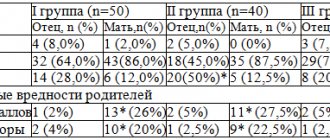Urinary tract infections are a common disease in everyday urological practice. Significant progress in the treatment of urinary tract infections has been observed over the past twenty years. The article touches upon such important issues as the etiology, pathogenesis and treatment of urinary tract infections in adults.
Urinary tract infections (UTIs) are a serious problem due to their prevalence and associated morbidity. According to statistics, they account for approximately 20% of all community-acquired and approximately 50% of nosocomial infections. Advances in recent decades have contributed to a better understanding of the pathogenesis of urinary tract infections and have elucidated the important role of both bacterial and patient-related factors in the development or prevention of infection.
The dynamic development of antibacterial therapy has greatly facilitated the correct treatment of UTIs, but the inappropriate and widespread abuse of antibacterial drugs has led to an increase in drug resistance of microorganisms.
Epidemiology of UTIs
The content of the article
Urinary tract infections are one of the most common infectious diseases in humans.
The incidence of UTI depends on the sex and age of the subjects, as well as on the specific characteristics of the study population.
- In the neonatal period, UTI is detected in approximately 60% of cases in boys, which is associated with a higher incidence of congenital urinary tract defects.
- From the age of three months, this trend is reversed, and the incidence of urinary tract infections in girls and women is ten times higher than in their male counterparts.
- Every second woman suffers from cystitis at least once in her life, and 10% of sexually active women develop UTIs once a year.
- Urinary tract infections are rare in men under 50 years of age, but in patients over 60 years of age the number of reported cases is growing rapidly. This is associated with the appearance of bladder obstruction, most often in the form of benign prostatic hyperplasia.
- The incidence of UTIs is much higher among people hospitalized for any reason or living in nursing homes or nursing homes.
Benign Prostatic Hyperplasia
The risk of UTI increases when there is an obstruction to the flow of urine or when circumstances favor bacterial colonization and growth. Physiological factors that predispose to UTIs include pregnancy, old age, and medical conditions such as diabetes and urolithiasis.
Etiology and pathogenesis of UTI
The most common causes of UTIs are bacteria, and less commonly viruses, fungi, or parasites. The prevalence of certain types of bacteria isolated from patient urine depends largely on the population being studied. The situation is completely different for patients receiving outpatient treatment than for patients in hospitals.
Under physiological conditions, the urinary tract is sterile except at the end of the urethra. The first episode of UTI in an outpatient setting is caused by Escherichia coli in 80% of cases, Staphylococcus saprophyticus in 10-15% (except for the group of young sexually active women, in which it accounts for about 30%), other gram-negative bacteria (Proteus mirabilis, Klebsiella spp.) or gram-positive (staphylococci, streptococci, enterococci). 70% of recurrent community-acquired infections are caused by Escherichia coli. Also, the most common nosocomial infections are caused by Escherichia coli (about 50%), Enterobacter spp., Pseudomonas spp., Serratia marcescens, as well as staphylococci, enterococci and fungi.
Escherichia coli
In 95% of patients, a UTI is the result of infection with a single strain of bacteria. Infection with several strains is observed in 5% of patients, mainly in catheterized patients with weakened immunity, neurogenic bladder disorders or defects of the urinary system.
Infection of the urinary system can occur through the ascending route (urogenic infections), the bloodstream (hematogenous infections - very rarely caused mainly by Staphylococcus aureus), the lymphatic route, or continuously (in the presence of a urogenital or urogenital fistula).
A UTI is almost always caused by bacteria entering the urethra. Under physiological conditions, bacteria often enter the urinary tract, but due to the body's defense mechanisms, the development of UTIs is rare.
The most important natural defense mechanisms against UTIs are:
- length of the urethra in men;
- ureteral peristalsis, normal function of vesicoureteral valves;
- acidification and concentration of urine;
- correct bacterial flora of the vagina and area around the urethra;
- antibacterial properties of prostate secretion;
- mechanisms for preventing bacterial adhesion in the urinary tract: mechanical impact of a stream of urine, mucopolysaccharides of the bladder wall, IgG and IgA antibodies.
Urinary tract infections rarely occur in healthy people with normal anatomical structure and physiological function of the urinary tract. In case of obstructed urine outflow or weakening of the body due to systemic diseases (diabetes, gout, tumor process), we often encounter inflammatory changes in the urinary system.
Gout
The most common factors contributing to the development of a urinary tract infection include:
- 1st pregnancy,
- old age,
- obstruction to the outflow of urine – urolithiasis, prostate adenoma,
- atrogenic factors – urinary tract instrumentation (cystoscopy, bladder catheterization, ascending pyelography),
- congenital malformations of the urinary tract – double cup-pelvic system, retrograde vesicoureteral outflow,
- diabetes, gout,
- neurogenic bladder,
- end-stage renal failure (dialysis),
- sexual relations,
- prolonged immobilization in bed.
Urine in the urinary tract of a healthy person is sterile. The presence of bacteria in it indicates infection.
The main symptom for diagnosing a UTI is the so-called significant bacteriuria, when the number of bacteria in 1 ml of fresh, aseptically collected urine exceeds 100,000.
The occurrence of significant bacteriuria by gender and age is presented below:
| Age | women | Men |
| School age | 1% | 0,03% |
| 15-25 years | 3% | 0,5% |
| 30-35 years | 5-10% | up to 1% |
| 50-70 years | > 10% | up to 4% |
| over 80 years old | > 20% | > 10% |
In people with dysuria, the presence of up to 100 bacteria may indicate a urinary tract infection. Treatment for UTIs should begin as soon as clinical symptoms appear.
Tasks of a urologist:
- fight against bacteriuria,
- refusal of instrumentation of the urinary tract - bladder catheterization,
- proper treatment of systemic diseases.
Interpretation of urine culture results: norm and pathology
The test result is displayed in CFU per 1 ml of urine. CFU (colony-forming units) is an absolute value indicating the number of bacterial cells in 1 ml of urine.
The laboratory will issue a printout of the results, which will indicate all types of microorganisms, their number, measured in CFU/ml, and an antibiogram - groups of drugs to which each type of bacteria is sensitive.
The result of bacterial culture is not always clearly positive or negative. It has reference values that indicate the degree of inflammation.
| Less than 1000 CFU/ml | Normal, no treatment required. |
| 1000-100000 CFU/ml | Re-examination is required. Perhaps the result is distorted due to violation of the rules for preparing or collecting urine. |
| More than 100,000 CFU/ml | If there is an infection, treatment must be started immediately. |
The following icons are placed on the antibiogram form:
| Designation | Level of sensitivity to antibiotic therapy |
| S | high |
| I | moderate |
| R | complete resistance to antibiotics |
General principles of treatment of urinary infections
- Antibacterial treatment.
- When choosing a drug and method of its use, the following are taken into account:
- drug sensitivity of the bacterial strain;
- patient tolerability of the drug;
- severity of infection;
- medical expenses.
- Symptomatic treatment depending on the type of disease:
- bed rest;
- regular and complete emptying of the bladder;
- painkillers, antispasmodics;
- fluid intake (diuresis more than 1.5 liters per day);
- refusal of nephrotoxic drugs.
Fluid intake
The main goal of antimicrobial treatment is to eliminate pathogenic bacteria and prevent recurrent UTIs. Treatment procedures are differentiated depending on the severity of the infection and the sensitivity of the bacteria to the drugs used.
We now have a number of medications that are particularly useful in treating UTIs. These include antibiotics, fluoroquinolones, chemotherapeutic agents (eg, Bactrim, Urotrim, Bispetol) and herbal preparations.
The basic principle of antimicrobial treatment is to conduct an antibiogram of bacteria growing from the inflamed area and carry out targeted treatment. In the case of acute infections with unpleasant signs, high fever and general symptoms, urologists prescribe broad-spectrum antibiotics that act on gram-negative bacteria as first-line drugs. In these cases, the use of fluoroquinolones is increasingly recommended.
The patient must submit urine for bacteriological analysis and antibiogram before starting treatment, as well as 2, 14, 30 days after starting treatment. If urinary sepsis is suspected during the peak of fever, blood is taken for culture and antibiogram, and additional treatment with two broad-spectrum antibiotics is started.
Antibioticogram
Method for testing urine for infection
To identify an infectious pathogen
urine culture analysis is carried out according to the following algorithm:
- Primary examination of urinary fluid sediment under a microscope (not always performed).
- Primary urine culture for sterility to identify the type of pathogen.
- Accumulation of harvested crops.
- Study of the characteristics of identified bacteria.
- Final identification of the pathogen.
For the test - urine culture - it is necessary to select a certain medium: for staphylococci - blood agar, streptococci - sugar solution, etc. However, sowing can also be carried out in several environments (maximum 3-4).
Bacteriological urine analysis generally takes 7-10 days. The resulting result will contain a description of the size, shape, transparency, shade, surface structure, and growth of the colony in height.
Classification of urinary tract infections
Depending on the location of the infection, the age of the patient, the severity of symptoms and the presence of additional diseases, the following classification of UTIs has been proposed:
Depending on the severity of clinical symptoms:
- Symptomatic urinary tract infections.
A. simple – in people without aggravating factors:
- acute inflammation of the lower urinary tract;
- recurrent inflammation of the lower urinary tract;
- acute pyelonephritis.
Acute pyelonephritis
b. complex – in people with aggravating circumstances:
- acute inflammation of the lower urinary tract;
- recurrent inflammation of the lower urinary tract;
- acute pyelonephritis.
- Asymptomatic bacteriuria:
A. in patients without additional risk factors;
b. in patients with additional risk factors.
Depending on the location of the infection:
- Infections of the upper urinary tract: kidneys, vesico-pelvic system, perinephric area.
- Infection of the lower urinary tract: bladder, urethra.
Asymptomatic bacteriuria
Most often it is discovered by chance during routine periodic examinations, since there are no subjective symptoms prompting the patient to seek medical help, and no noticeable changes in the urinary system are detected.
In the absence of concomitant disturbances in the outflow of urine, the course is usually mild and does not require treatment. In patients with urinary tract obstruction, symptoms usually do not resolve spontaneously. Antibacterial treatment is recommended for this group of patients.
Additionally, treatment should be started in the following cases:
- pregnancy (risk of pyelonephritis, premature birth, low birth weight of the newborn);
- before planned surgery (mainly on the urinary tract);
- diabetes.
In the first trimester of pregnancy, an antibiogram should always be performed before starting treatment for a UTI.
Acute pyelonephritis
Bacterial nonspecific inflammation of the renal system. The infection is mainly caused by Escherichia coli or other gram-negative bacilli: Klebsiella spp., Proteus vulgaris. It most often occurs in girls over 5 years of age and in women before menopause.
In the case of pyelonephritis, the following is observed:
- sudden onset;
- fever (up to 40 ° C);
- chills;
- pain in the lumbar region (positive Goldflam sign on this side);
- nausea, vomiting;
- increased ESR, peripheral blood leukocytosis;
- in urine: numerous bacteria, leukocytes, leukocyte cells, protein, red blood cells.
Nausea with pyelonephritis
In case of AP, in addition to urine analysis and culture, abdominal ultrasound and urography (after the disappearance of acute symptoms) should always be performed to visualize disturbances in the outflow of urine.
Patients with mild acute pyelonephritis can be treated on an outpatient basis. In severe cases, patients must be hospitalized. Initially, medications are used parenterally. Only 24 hours after the fever has disappeared, they can be administered orally.
Hospitalization of patients with acute pyelonephritis is carried out in the following cases:
- severe infection;
- no improvement after 2 days of targeted antibiotic therapy;
- difficult outflow of urine, mainly in older people and patients with diabetes;
- pregnancy.
If fever and low back pain persist after 3 days of treatment, repeat urine culture and repeat abdominal ultrasound to look for peri- or intrarenal abscess or previously unrecognized hip joint abnormalities.
The most common complications of acute pyelonephritis include chronic pyelonephritis, urinary tract sepsis, hydronephrosis, perirenal abscess, renal papillary necrosis, and scarring of the renal cortex.
Chronic pyelonephritis most often affects women. It is characterized by an insidious onset, a long, rarely symptomatic course with periodic exacerbations. Often leads to kidney failure.
Indications for prescribing urine culture
The content of the article
A urine culture test can be prescribed by a physician, gynecologist, urologist or pediatrician in the following cases:
- for infections of the urinary system (recurrent cystitis, pyelonephritis, urological pathologies, urolithiasis);
- for diseases of the gastrointestinal tract (enterococcus and dysentery);
- for diabetes, pregnancy and infertility, immunodeficiency, tuberculosis, HIV;
- to monitor the effectiveness of infection treatment;
- to clarify the diagnosis in case of ambiguous symptoms;
- to identify the resistance of microorganisms to antibacterial therapy.
Urine culture may also be prescribed if the following symptoms are present:
- cutting pain during urination (observed with cystitis);
- violation of the frequency of urination (may indicate kidney damage, prostatitis);
- nausea, vomiting, general weakness, fever (symptoms of kidney disease);
- lower back pain (a signal of the possible development of bacteria in the kidney tubules);
- change in urine color.
Cystitis – inflammation of the bladder
Acute cystitis in people under 50 years of age applies only to women. This is an inflammation of the mucous membrane, sometimes of the deeper layers of the bladder wall.
Cystitis
Symptoms:
- sudden onset;
- symptoms of bladder irritation (pollakiuria, urge, painful urination);
- pain above the pubic joint;
- red blood cells, white blood cells and numerous bacteria are found in the urine.
Young women with dysuria usually develop one of three types of infection: inflammation of the bladder, urethra, or vagina. These diseases are differentiated based on clinical symptoms and laboratory urine test results.
| Diagnosis | Piuria | Hematuria | Bacteriuria |
| Cystitis | usually | Sometimes | From 100 to 100 thousand |
| Urethritis | usually | rarely | up to 100 |
| Vaginitis | rarely | rarely | up to 100 |
With vaginitis, there is discharge, itching in the vagina, pain during sexual intercourse, but there is no pollakiuria or painful urge to urinate.
Treatment of cystitis should be carried out from 3 to 7 days. In the uncomplicated form, the effectiveness of 3-day treatment is the same as that of 7-day treatment, but fewer side effects were found.
Urologists use longer treatment in women with the following conditions:
- pregnancy, diabetes;
- symptoms last more than 7 days;
- vaginal contraception;
- age over 65 years.
Urine culture analysis during pregnancy
During pregnancy, a woman is even more vulnerable than usual to various diseases. These include infections of various origins, including sexually transmitted ones. In addition, studies have proven that 45% of all fetal deaths (miscarriage, miscarriage) occurred due to intrauterine infection.
Bacteriological analysis of urine during pregnancy is mandatory, even in the absence of signs of infection. The infection could occur for a long time and asymptomatically in a woman’s body and become more active during pregnancy (up to 6% of pregnant women have latent bacteriuria).
The importance of urine culture testing during pregnancy is demonstrated by the following:
- detection and identification of infectious agents;
- carrying out possible treatment taking into account the duration of pregnancy;
- prevention of infection of the fetus and causing irreparable organ changes incompatible with life.
Urine culture should be carried out twice during pregnancy - in the 1st trimester and almost before birth (at 36 weeks). If appropriate indications are available, this value may increase. A doctor may prescribe additional urine cultures for a pregnant woman if she suffers from diseases of the bladder and kidneys, or if leukocytes and protein were detected during a general urine test.
The rules for preparing and collecting material for a pregnant woman are general. In the later stages of pregnancy, the fetus puts pressure on the bladder, so it is sometimes difficult for a woman to endure until the morning. It is recommended to go to the toilet with an alarm clock at 1-2 am, and then collect urine for analysis in the morning.
Urethritis
Most often, the disease is associated with sexual contact, catheterization or endoscopy of the bladder. Urethritis always occurs in patients with an indwelling urinary catheter. The opening of the urethra is red, patients complain of a number of symptoms:
- burning pain and itching in the urethra;
- leakage of mucous, glassy or purulent discharge;
- lower abdominal pain.
Until recently, the most common cause of urethritis was gonorrhea. The infections are now twice as likely to be caused by Chlamydia trachomatis and Ureoplasma urealyticum. In 30% of cases, gonorrhea infection coexists with two others.
Urethritis
Standard urine cultures are often sterile, followed by immunological tests and isolation of microorganisms on specially prepared media.
The most common treatments are a single dose of fluoroquinolones and doxycycline for 7 days.
Recurrent urinary tract infections
Recurrent UTIs are caused by the same pathogen as the first case, usually within 2 weeks after stopping treatment. Mostly relapse occurs in women, and most often it is inflammation of the bladder. After the first episode of urinary tract infection, approximately 20% of UTIs are rediagnosed within one year.
Causes of recurrent urinary tract infections include:
- incorrectly selected drug;
- route of administration, dosage, duration of treatment;
- obstruction to the flow of urine.
In treatment, urologists recommend constant use of antibacterial drugs and prophylaxis after sexual intercourse. For urinary tract infections less than twice a year, only episodes of infection are treated.
When infection occurs more than 3 times a year and is not associated with sexual intercourse, the drugs are administered daily or 3 times a week at night, while in the case of infection associated with sexual intercourse, the drugs are administered once immediately after sexual intercourse.
Treatment for 3–6 months reduces the incidence of urinary tract infections by up to 5–10%.
Method for determining the sensitivity of pathogens to antibiotics
To determine the sensitivity of microorganisms to antibiotics (antibioticogram)
urine culture analysis is carried out according to the following algorithm:
- Dividing the Petri dish into several sectors and placing antibiotic strips in each of them.
- Color marking of each area and sowing with the selected crop.
- Place the bowl in a thermostat with a temperature of 36.6.
- Conducting daily monitoring. The absence of growth and reproduction of bacteria means that the antibiotic suppresses them, which means it was chosen correctly.
Otherwise, the pathogen is resistant to the action of this antibiotic, and it must be replaced.
An antibioticogram is performed only when bacteria are detected in excess of 104 CFU/ml. The duration of such an analysis is 4-5 days. Modern express methods allow you to get results within 2 days. In emergency cases, when the result is necessary for the treatment of a seriously ill patient, preliminary data can be provided after 4 hours.
Sources
- Schaeffer A.: Urinary tract infections. Campbell Urology, 1992.
- Naber K.G. et al.: Recommendations for the treatment of urinary tract and male genital tract infections, 2000.
- Grinevich V. et al.: Urinary tract infections. Urological review, 2000.
- Safir MH et al.: Urinary tract infections: simple and complex, 1998.
- Eichman V.: Treatment of bacterial infections of the genitourinary system. Urological Review, 2000.
- Macfarlane MT: Urinary Tract Infections, 1997.
ONLINE REGISTRATION at the DIANA clinic
You can sign up by calling the toll-free phone number 8-800-707-15-60 or filling out the contact form. In this case, we will contact you ourselves.
If you find an error, please select a piece of text and press Ctrl+Enter







